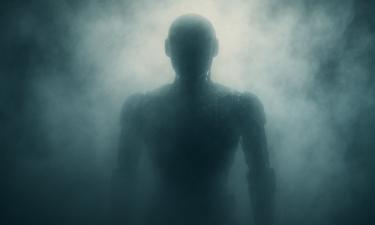Peru Releases Dirty War Report
 The Peruvian Truth Commission, after a full review of the county’s internal conflict from 1980 to 2000, has drawn some conclusions. The Commission estimates that 75.000 were killed during two decades of warfare
The Peruvian Truth Commission, after a full review of the county’s internal conflict from 1980 to 2000, has drawn some conclusions. The Commission estimates that 75.000 were killed during two decades of warfare
Twenty years of warfare between rebels and the government took 75,000 lives, far more than previous estimations, according to a recent research released by Peru's Truth and Reconciliation Commission. The report covers the conflict between the Maoist guerrillas of Shinning Path, or Sendero Luminoso, and the administrations of presidents Fernando Belaunde Terry (1980-1985), Alan Garcia (1985-1990) and Alberto Fujimori (1990-2000).
Peru's civil war ranks at the top of South American massacres, together with Colombia's 39-year conflict, but doubling Argentina's juntas' genocide that took 30,000 lives and Pinochet's regime assassinations (3,500). Also, Peruvian figures surpassed prior estimates of 50,000 deaths. As the Truth Commission ended its work on Thursday, it became the last in Latin America to try to shed light over the violent conflicts of the Cold War. Similar actions were taken in Argentina and Uruguay, in the eighties; in Chile and Central America, in the nineties.
Hundreds of military officers that took part on crimes against humanity are named in the report, but such information will not be released to the public. It is expected that their names, together with the charges they may face, will be given to prosecutors. The government-appointed commission gathered nearly 17,000 testimonies from 530 towns even in remote areas, where atrocities took considerable dimensions, as held public hearings in seven regions, where survivors told tales of horror.
Murders include civilians killed by both the Shinning Path guerrillas and the Armed Forces, who had expressed, together with the Catholic Church, their opposition to review Peru's history darkest chapter. It has also created some controversy among political leaders as Alan Garcia, who was close to win the 2000 elections and Alberto Fujimori, currently exiled in Japan, but willing to come back.
Fujimori has always prided for having "annihilated" Shining Path movement. However, official reports from southern Peru prove that the group is still moving in the forests, recruiting members and launching attacks to Army troopers. Recently, the Maoists occupied several towns and villages in the rural areas of the country, as killed over five soldiers. However, authorities say their number is significantly less important than in the early nineties, when the insurgents reached 10,000.
Sendero Luminoso was founded in the 1960s as a Maoist faction of Peru's Communist Party. Its objective was to overthrow the existing government and substitute it by its own peculiar form of Maoist/Incan revolutionary community in its place using particularly violent means. The organization, led by the University Professor Abigail Guzman, started operating militarily in 1978 and terrorized country's population all along the eighties and the first half of the nineties.
The Shining Path was just as brutal with villages that refused to submit to its rule. In March 1983, guerrillas retaliated against the community of Lucanamarca after villagers killed 10 rebels, burning one alive. The guerrillas shot or hacked to death 62 people, including 18 children. In 1986 the fanatic armed group, that used to kill villager's dogs to terrorize them, blew up the Soviet Embassy in Lima.
Guzman was captured in 1992 along with other top guerrilla leaders and the group's growing threat to the government began to fade. A rebel faction continues to operate in Peru's coca-growing jungle southern region, where they are said to provide protection for cocaine traffickers.
 The Peruvian Truth Commission, after a full review of the county’s internal conflict from 1980 to 2000, has drawn some conclusions. The Commission estimates that 75.000 were killed during two decades of warfare
The Peruvian Truth Commission, after a full review of the county’s internal conflict from 1980 to 2000, has drawn some conclusions. The Commission estimates that 75.000 were killed during two decades of warfare



